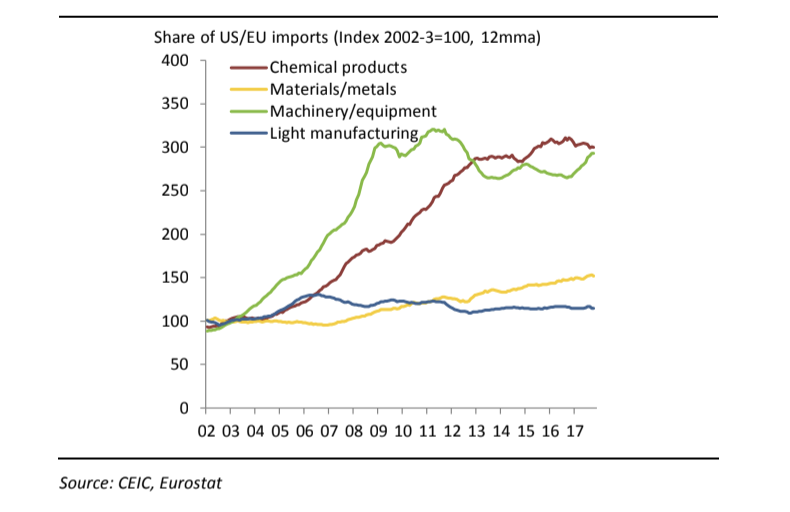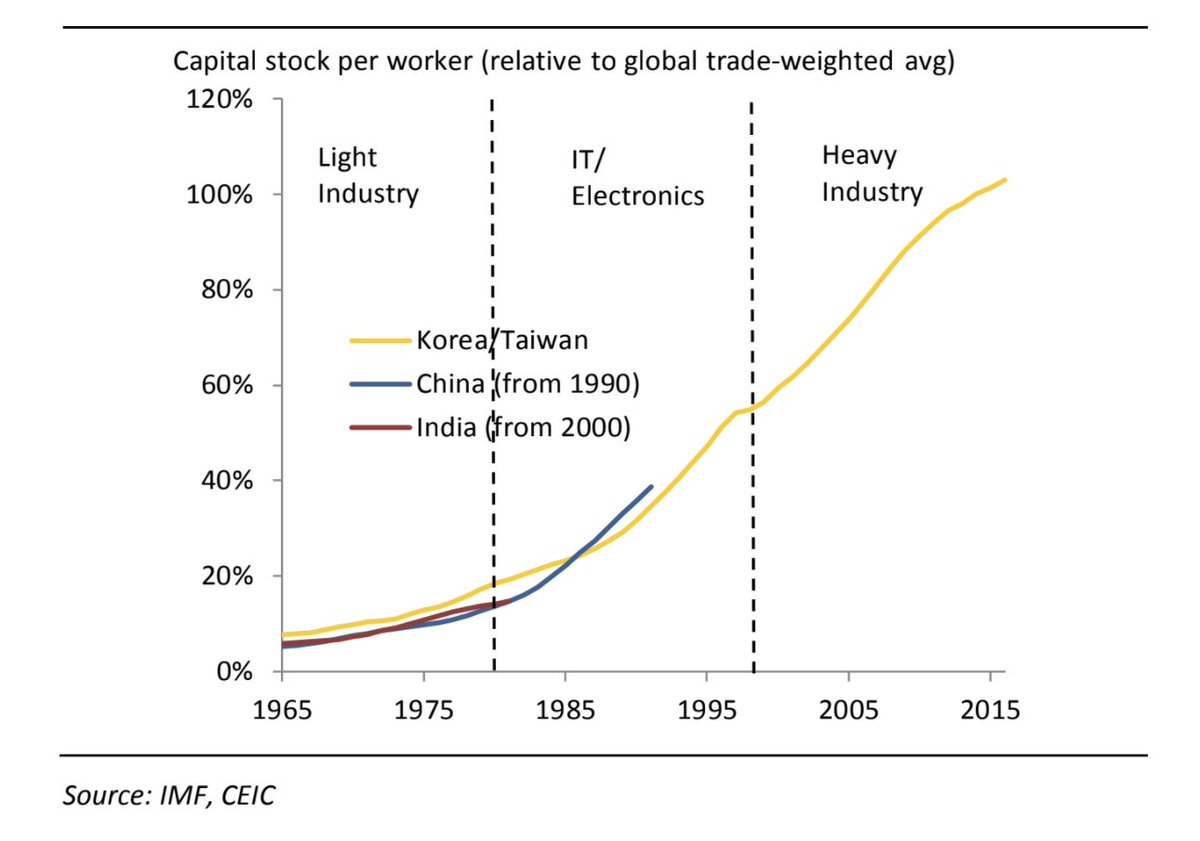Those marvelling at B& #39;Desh& #39;s rise, should know that our labour laws were designed since 1950& #39;s to discourage capex-lite manufacturing units (like garments etc), and encourage capital-heavy units like Auto-ancs, pharma etc.
(1/n)
(1/n)
The intent was to ensure "Domestic labour" didnt become "slaves to the foreign consumer".
Instead domestic labour became a slave to domestic poverty (which obviously seemed like a better option to our policy-makers!!)
Now lets see how this played out in our exports:-
(2/n)
Instead domestic labour became a slave to domestic poverty (which obviously seemed like a better option to our policy-makers!!)
Now lets see how this played out in our exports:-
(2/n)
Here is a graph of India& #39;s %age share in US/EU imports across different categories, with 2002 being used as base.
Our initial gains in capex-intense exports (the greenline) have steadily petered out, after peaking 2012. (3/n)
Our initial gains in capex-intense exports (the greenline) have steadily petered out, after peaking 2012. (3/n)
The ignored capex-light sectors (blue and yellow line) have stayed stagnant. And that is a sacrilege for a country like India where capital stock per worker is only 13% of global avg. Which means our relative advantage will remain our labour force for a long long while(4/n)
With all the talk of capturing the business that will leave China, a lot of light-manufacturing has already been leaving since 2010. It is moving to "New Asian tigers" : Vietnam, Cambodia, B& #39;desh...not India, married to 1st world principles with 3rd world demographics (5/n)

 Read on Twitter
Read on Twitter





